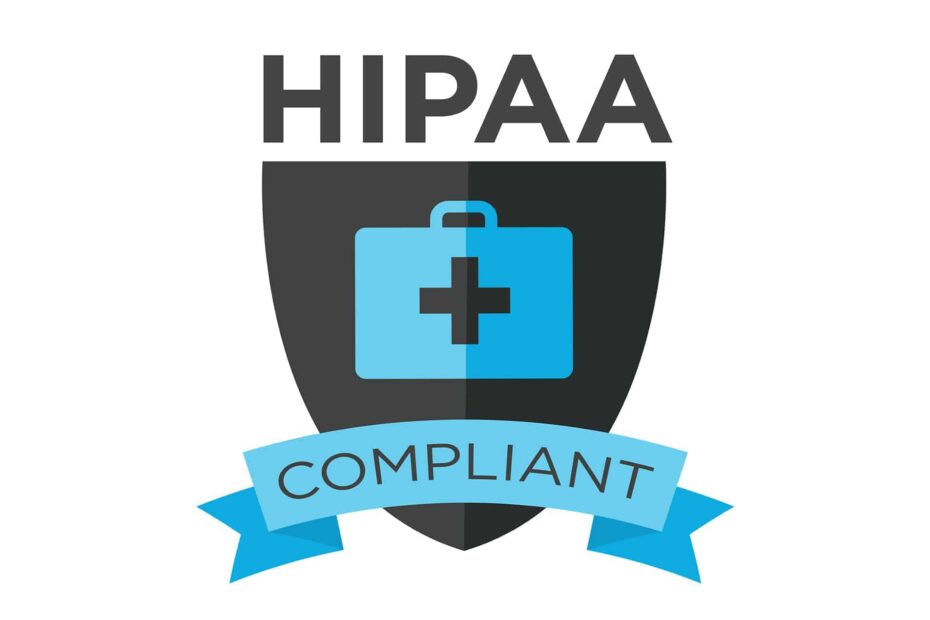This article covers every field of HIPAA and you will learn “How HIPAA protects the privacy of an individual ?” Along with HIPPA role in Cyber Security.
Health Insurance and Accountability Act (HIPAA) is a US federal law that was acted in 1996 to protect the privacy and security of individuals’ medical records and other identifiable health information. It protects the patient’s sensitive health information from being disclosed without the consent of the patient.
Before HIPPA there is no proper way of sharing information and also very few laws and regulations to protect the information. Which made it difficult for individuals to move and transfer information and the risk of unauthorized access also increases.
Therefore, the need arises to make a wider law that protects the privacy of the individual.
HIPPA is specifically for health care data, if you wanna know more about general protection of privacy you can check the post, here
Table of Contents
- How HIPAA developed Over Time ?
- How HIPAA protects the privacy of an individual?
- HIPAA’s Key Provisions
- Privacy Rule
- Security Rule
- Breach Notification Rule
- HIPAA Compliance
- Who Must Comply with HIPAA?
- Penalties for Non-Compliance
- Benefits of HIPAA
- Privacy Assurance
- Data Security
- Challenges and Controversies
- Balancing Privacy and Access
- Emerging Technologies
- HIPAA and Telemedicine
- Telemedicine’s Rapid Growth
- HIPAA’s Relevance in Telemedicine
- HIPAA and Mobile Health Apps
- The Rise of Mobile Health Apps
- How HIPAA Affects App Developers
- The Role of HIPAA in Research
- Protecting Research Participants
- Data Sharing and HIPAA
- HIPAA Myths and Misconceptions
- Common Misunderstandings
- Debunking the Myths
- The Future of HIPAA
- Potential Revisions
- Evolving Privacy Concerns
- Conclusion
- FAQs
How HIPAA developed Over Time ?
HIPAA is being gradually updated and improved over time since it was first created in 1996. Some of the major or key improvements to HIPAA include:
· The HITECH Act:
In 2009, Health Information Technology for Economic and Clinical Health (HITECH) is passed in order to strengthen HIPAA’s privacy and protection policies and made significant changes and improvements. HITECH increased the penalties for those who do not follow the law, as before the penalties are very less. HITECH also set new requirements for breach notification and expand the scope of HIPAA to include business associates.
· Omnibus Rule:
In 2013, the department of Health and Human Services (HHS) issued the omnibus rule, this rule strengthen HIPAA’s privacy and security regulations. They also include subcontractors in the definition of business associates given by HITECH. They also increase the rights of patients/individuals by prohibiting the sale of personal information without the consent of the individual.
· Interoperability Rule:
Interoperability Rules are a set of regulations purposed by Medicare and Medicaid Services (MMS) that are used to improve access, exchange, and sharing of Electronic Health Information (EHI) to patients, providers, and payers. The rules were implemented in 2020 and increased the excess of patients to their personal data either using a third-party app or a patient portal. The Rule also asks providers to exchange information with other providers in order to improve patient outcomes and support care coordination.
How HIPAA protects the privacy of an individual?
Health Insurance and Accountability Act (HIPAA) is a law that was proposed to protect the privacy of an individual specifically related to the medical. Following are the ways HIPAA protects the privacy of the individual:
1. Authorization Requirements:
Covered entities and their business associates must need written authorization from the individual before using or disclosing the information related to them for some purposes like marketing and research purposes.
2. Security Standards:
Covered entities and their business associates must implement administrative, physical, and technical safeguards to protect the confidentiality, integrity, and availability of PHI, including when it is transmitted electronically. This includes encryption and decryption techniques to protect data as well as apply authentication and access control to make sure that the record can only be viewed by the authorized person.
3. Breach Notification Rule:
This rule requires covered entities to notify individuals and the Department of Health and Human Services (HHS) in the event of a data breach involving protected health information (PHI). Covered entities must provide notifications to affected individuals within 60 days of discovering a breach, and must also provide annual reports to HHS detailing all breaches that occurred during the previous year.
4. Physical Protection:
This includes the protection of the faculties where the information related to the patient is stored, as well as controlling access to the electronic devices where the information is stored
HIPAA requires covered entities to implement appropriate administrative, physical, and technical safeguards to protect the confidentiality, integrity, and availability of electronically protected health information (ePHI) that is created, received, maintained, or transmitted.
In terms of online security standards, HIPAA requires covered entities to implement measures such as access controls, encryption, and secure transmission protocols to protect ePHI. Covered entities must also conduct regular risk assessments and implement policies and procedures to address security incidents and breaches.
HIPAA and Cybersecurity:
In an era where data breaches and cyber threats loom large, HIPAA not only addresses the privacy of personal health information but also places a significant emphasis on cybersecurity. Specifically, HIPAA requires covered entities to follow the National Institute of Standards and Technology (NIST) Cybersecurity Framework, a widely recognized set of guidelines for managing and reducing cybersecurity risk.
The NIST framework comprises five core functions, each of which plays a crucial role in fortifying the security of healthcare data:
- Identify
- Protect
- Detect
- Respond
- Recover
Identify:
The first step in the NIST framework is “Identify.” Covered entities must comprehensively identify and catalog their assets, both physical and digital. This includes not only understanding what data they possess but also recognizing the potential threats and vulnerabilities that could compromise the security of that data. By gaining a clear picture of their healthcare data landscape, organizations can better protect it.
Protect:
“Protect” is the second core function, focusing on safeguarding the data identified in the first step. HIPAA requires covered entities to establish robust safeguards to prevent unauthorized access to patient information. This includes measures such as encryption, access controls, and secure authentication methods to ensure that sensitive data remains confidential and intact.
Detect:
Detecting cybersecurity threats in real-time is paramount. The third core function, “Detect,” revolves around implementing mechanisms and strategies to promptly identify any breaches or security incidents. Covered entities must have monitoring systems in place to detect suspicious activities and unauthorized access. The goal is to catch any security breaches as soon as they occur, minimizing potential damage.
Respond:
In the event of a security breach or incident, a rapid and effective response is essential. The “Respond” core function outlines the need for a well-defined incident response plan. HIPAA mandates that covered entities have a clear roadmap for addressing security incidents, which includes containing the breach, mitigating its impact, and reporting it as required by law.
Recover:
The final core function, “Recover,” focuses on the restoration of normal operations after a security incident. Covered entities must develop strategies for data recovery and system restoration, ensuring that patient care can continue without interruption.
Incorporating the NIST Cybersecurity Framework into HIPAA compliance adds an extra layer of protection to the privacy of individuals’ health information. By adhering to these five core functions, healthcare organizations can significantly reduce the risk of cybersecurity breaches, ultimately enhancing the security and confidentiality of patient data.
HIPAA’s Key Provisions:
HIPAA comprises several key provisions that collectively form a robust framework to protects privacy of individuals’ health information.
Privacy Rule
The HIPAA Privacy Rule establishes national standards for the protection of individuals’ medical records and personal health information.
Security Rule
Complementing the Privacy Rule, the HIPAA Security Rule focuses on the security of electronic protected health information (ePHI).
Breach Notification Rule
The Breach Notification Rule requires covered entities to notify affected individuals, the Department of Health and Human Services (HHS), and, in some cases, the media, in the event of a data breach.
HIPAA Compliance:
Who Must Comply with HIPAA?
HIPAA compliance is mandatory for covered entities, which include healthcare providers, health plans, and healthcare clearinghouses, as well as their business associates.
Penalties for Non-Compliance
Non-compliance with HIPAA can lead to severe penalties, including substantial fines and legal repercussions.
What Are The Benefits of HIPAA ?
Privacy Assurance
One of the most significant benefits of HIPAA is the assurance of privacy for individuals seeking medical treatment.
Data Security
HIPAA’s security measures help protect health information from unauthorized access and data breaches.
Challenges and Controversies:
Balancing Privacy and Access
While HIPAA aims to protect privacy, it must also strike a balance with providing access to necessary medical information for healthcare providers.
Emerging Technologies
The rapid advancement of technology poses new challenges for HIPAA compliance, as healthcare data becomes more mobile and interconnected.
HIPAA and Telemedicine:
Telemedicine’s Rapid Growth
Telemedicine is on the rise, and HIPAA plays a crucial role in ensuring the privacy and security of remote healthcare consultations.
HIPAA’s Relevance in Telemedicine
We explore how HIPAA regulations apply to telemedicine platforms and the protection of patient data during virtual visits.
HIPAA and Mobile Health Apps:
The Rise of Mobile Health Apps
Mobile health apps are transforming healthcare delivery, but they also raise questions about HIPAA compliance.
How HIPAA Affects App Developers
Developers of healthcare apps must navigate HIPAA’s requirements to ensure the security and privacy of user data.
The Role of HIPAA in Research:
Protecting Research Participants
HIPAA guidelines extend to research activities, safeguarding the privacy of individuals participating in medical studies.
Data Sharing and HIPAA
Researchers must navigate HIPAA’s rules when sharing medical data for scientific advancements, ensuring privacy is maintained.
HIPAA Myths and Misconceptions:
Common Misunderstandings
There are several misconceptions surrounding HIPAA, including the belief that it only applies to healthcare providers.
Debunking the Myths
We debunk common HIPAA myths and provide clarity on the act’s scope and implications.
The Future of HIPAA:
Potential Revisions
As technology continues to evolve, there may be revisions to HIPAA to address emerging privacy challenges.
Evolving Privacy Concerns
The future of HIPAA must address evolving privacy concerns in an increasingly interconnected healthcare landscape.
Conclusion
In a world where data breaches and privacy concerns abound, HIPAA stands as a stalwart guardian of individuals’ healthcare information. It ensures that personal health information remains confidential, secure, and accessible only to those with a legitimate need. By striking a balance between privacy and accessibility, HIPAA continues to play a pivotal role in safeguarding the privacy of individuals in the digital age.
FAQs
What is the primary purpose of HIPAA?
The primary purpose of HIPAA is to protects the privacy and security of individuals’ health information.
Can individuals access their own PHI under HIPAA?
Yes, individuals have the right to access their own Protected Health Information (PHI) under HIPAA.
What are the penalties for HIPAA violations?
Penalties for HIPAA violations can range from fines to criminal charges, depending on the severity of the violation.
Does HIPAA apply to all healthcare providers?
HIPAA applies to covered entities, which include healthcare providers, health plans, and healthcare clearinghouses.
How can healthcare organizations ensure HIPAA compliance?
Healthcare organizations can ensure HIPAA compliance by implementing strict privacy and security measures, conducting regular audits, and providing training to staff members.


Pingback: Should I Share my Personal Information online or not ?